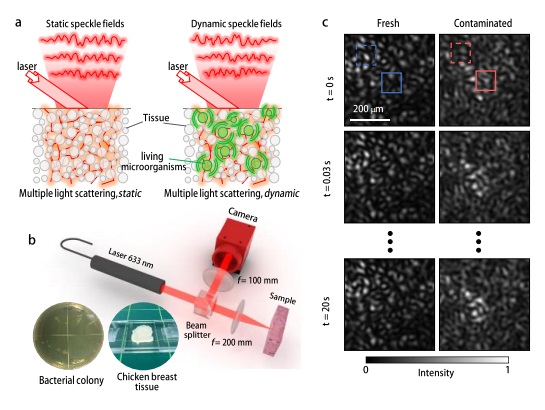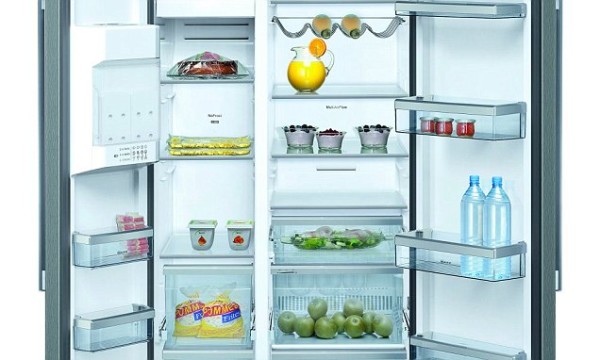
Researchers from the Advanced Institutes of Science and Technology, South Korea, have announced that they have successfully developed a quick and easy way to detect bacteria on a food’s surface.
Their research paper has been published by Cornell University. The method is known as Laser Speckle Technique, and according to health experts, this is a major breakthrough in preventing food poisoning.
Food poisoning is a potentially lethal condition constantly facing the food industry. In the United States alone, about 50 million people suffer food poisoning. More than a million people also suffer potential lethal salmonella poisoning. Symptoms of salmonellosis include diarrhea, fever and abdominal cramps; developing 12 to 72 hours after infection.
Finding simple ways to save people from eating contaminated food, has been the goal of researchers. The most common detection methods developed by researchers in the past involved techniques such as microbiological culturing, polymerase chain reactions, high-performance liquid chromatography and mass spectrometry, amongst others.
However, these methods are complex, expensive and time-consuming. They require highly trained technicians to perform them. To compound the problem, few food companies and outlets have access to this kind of technology. Consumers, therefore, have to take the hygiene of most foods they buy, on trust.
But the good news is, this new invention by the Korean physicists can spot bacteria on the surface of food in just a few seconds. The researchers said their technique could easily be used in food processing lines. It can also be used in standard home refrigerators.
According to the MIT Technology Review, bacteria such as salmonella, have hair-like flagella that they use to propel themselves across the surfaces of food. This movement turns the surface of contaminated food into an ocean of writhing microorganisms. The researchers, led by Jonghee Yoon, managed to develop a method to detect this movement, saying it is straightforward. When a red coherent laser beam hits biological tissue, it is scattered through the material. This scattering causes the light to interfere, creating a random pattern called laser speckle.
Since bacteria on the surface of food also scatters light, this influences the speckle. Hence, as the bacteria moves, the speckle pattern changes. All that is needed to monitor this change is a camera that can record the change over a few seconds. The researchers used one that takes images at a rate of 30 times a second, processing the images by subtracting one from another to reveal any difference.
The researchers first tested their invention with a chicken breast; samples of chicken breast were contaminated with the common bacteria Escherichia coli and Bacillus cereus – common causes of food borne illness. The researchers then zapped each of the samples with a laser, while recording the speckle with a camera.
The results clearly showed the utility of the technique. The image subtraction technique revealed which samples are contaminated and to what degree. The technique picked up both types of bacterial contamination.
“By detecting the decorrelation in the laser speckle intensity patterns from tissues, the living activities of microörganisms can be detected,” lead researcher Yoon said.
The researchers also revealed that the technique does not require contact with food, and so can be done at a distance. The equipment can also see through transparent plastic packaging, which does not influence the speckle pattern.
It is cheap and simple, and could easily be fitted to ordinary refrigerators. No special expertise is needed to operate it. Particularly in developing countries, where microbiology laboratories are scarce, this simple equipment will be useful in reducing food poisoning cases.
If you want to support Anonymous Independent & Investigative News, please follow us on Twitter: Follow @AnonymousNewsHQ.
This article (Food Safety: Researchers Develop Quick and Easy Method to Detect Bacteria on Surface of Food) is a free and open source. You have permission to republish this article under a Creative Commons license with attribution to the author and AnonHQ.com.







